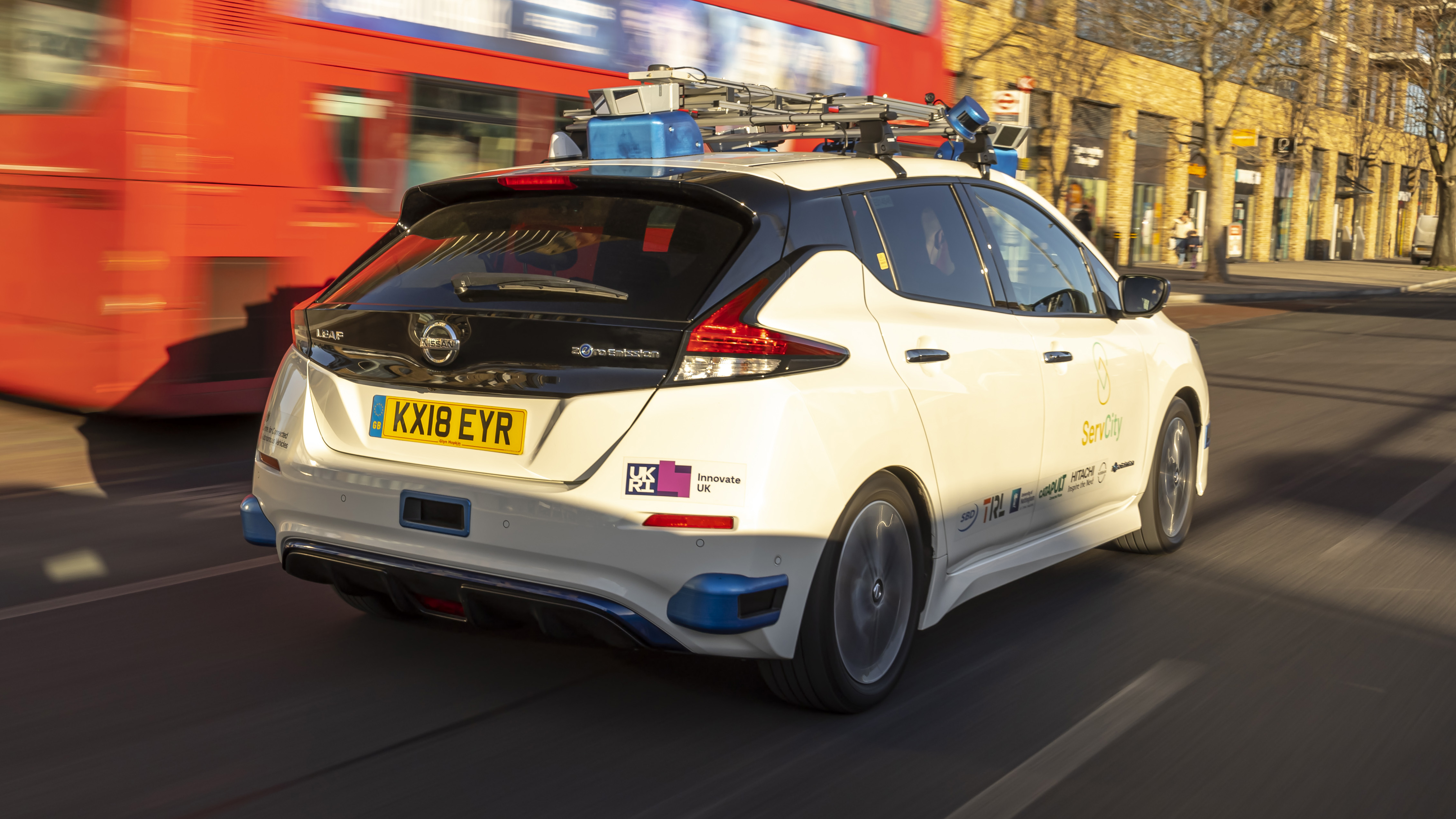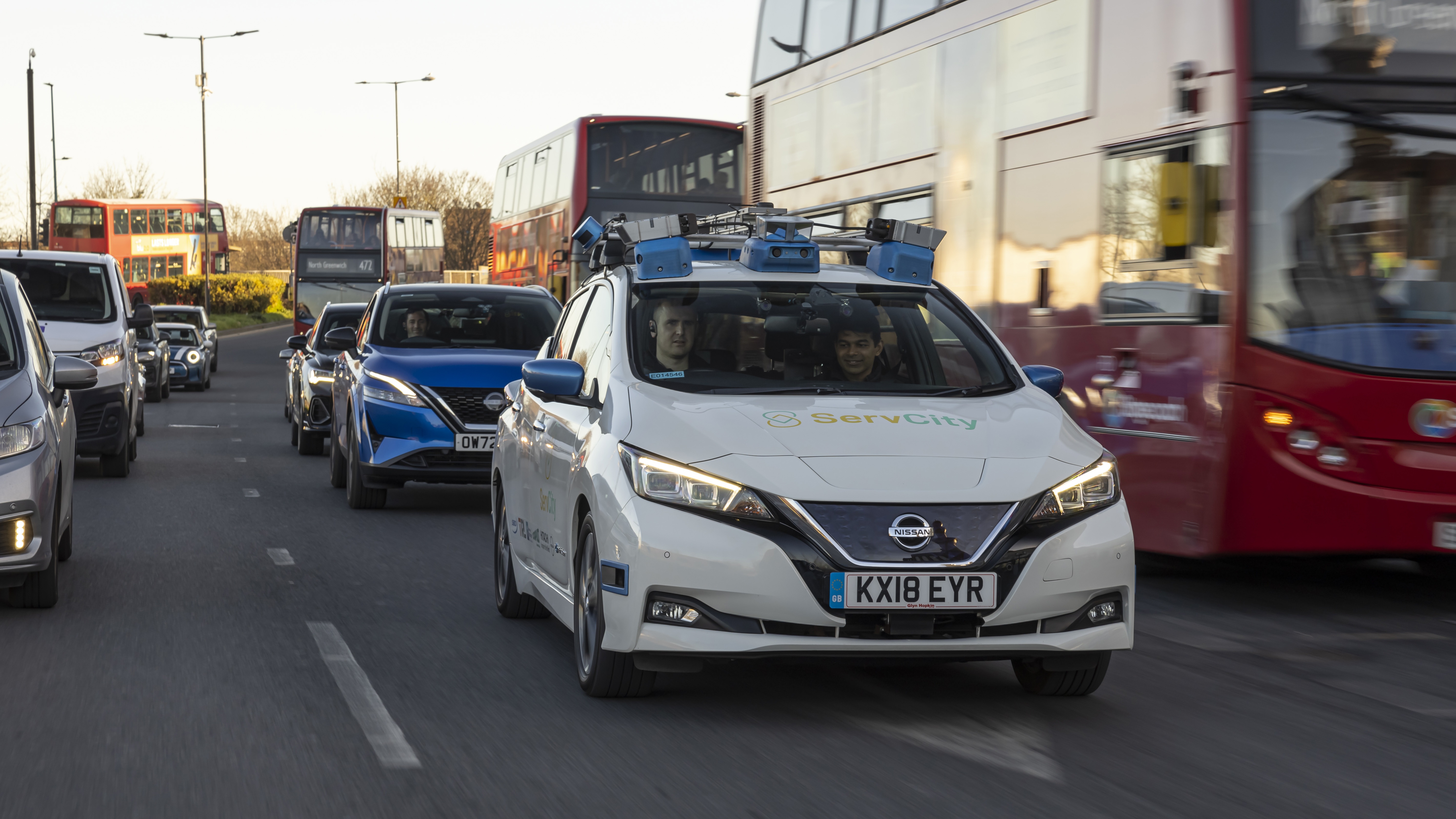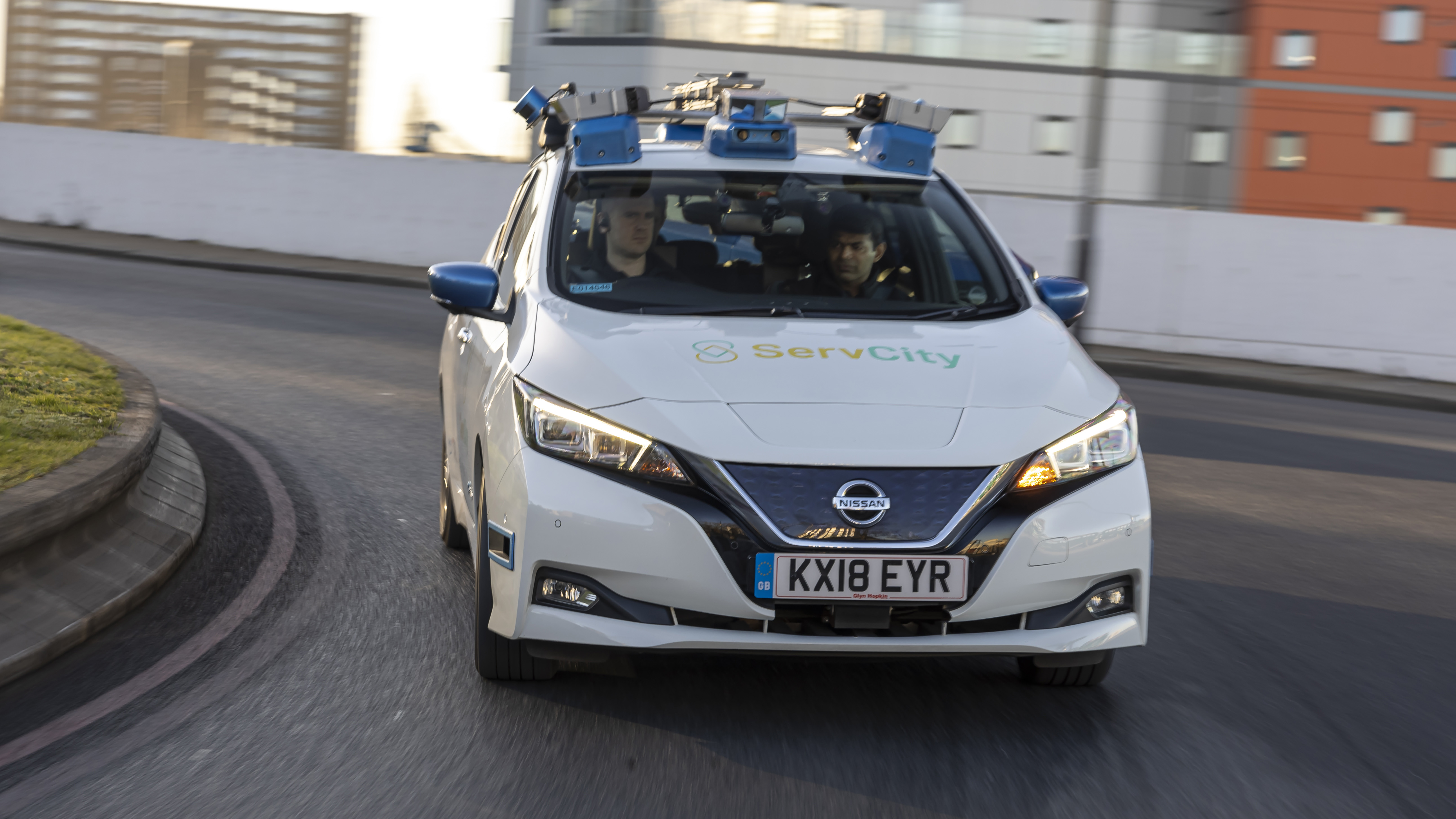
Nissan has built a self-driving Leaf that *worked* in city traffic. Here's how
But does it foreshadow a dystopian future vision of gridlock?
Cars that'll drive themselves down a motorway are on sale in many countries. Sure they're moving fast, but the maths is straightforward. There are no pedestrians or cyclists or roadworks or fly-parked delivery vans. No junctions or roundabouts or unpredictable blind corners. Throw that lot into the mix and you've got South London at 11am.
That's where I've just been a passenger in a self-driving Nissan Leaf. It managed perfectly well.
The Leaf uses nine cameras to spot and identify objects all around, plus four lidar scanners to measure their distance and trajectory. It also has high-res maps, and an ability to geolocate itself to within 1cm.
The entire boot is taken up with powerful PCs. But then, say the engineers, the current task is to get a car that can do the driving. They haven't started on the miniaturisation and cost-reduction yet.
There's always an engineer in the driving seat, eyes on the road and the mirrors, hands ready to grab the wheel, or jab the brake. He never needed to intervene during my ride.
We travelled the same loop of road twice. First time, the car was operating as a sealed system. Second time, it had, literally, some help from above. It's this external assistance that takes the system to a new level of smoothness and competence.
ServCity, a Government-backed group of agencies including the Transport Research Laboratory, have installed roadside cameras over an area of South London. These are connected to a highly intelligent analytics system that identifies in real-time obstructions like parked vehicles at the edge of the road, buses at bus stops, or road works. The analysed data is put into a standard code that autonomous cars of all makes can use, and transmitted by 4G.
This extra layer of information gives the autonomous car the ability to drive predictively, changing lane to avoid obstacles it can't yet see. The engineers say that by merging more smoothly, general traffic flow is improved.
Obvious questions then. When? They won't say. Autonomous driving predictions have a habit of coming unstuck, and being pushed back. For a start, it's likely to be 2025 before self-driving on the road is legal in Britain without a test engineer in the seat. Besides, the car makers need to drastically cut the systems' cost, size and power consumption.
Also, at the moment, the Leaf can only drive itself where there's a central reservation. It can cope with traffic lights, pedestrian crossings, give ways and roundabouts. But oncoming traffic is a whole other ball game it's yet to tackle.
Top Gear
Newsletter
Thank you for subscribing to our newsletter. Look out for your regular round-up of news, reviews and offers in your inbox.
Get all the latest news, reviews and exclusives, direct to your inbox.
Don't expect people will be speccing an autonomous-drive option on their new car for the foreseeable. The tech will come first on taxis, delivery vehicles and the like. After all, say it costs £100,000. That's too much for a private buyer. But if it makes redundant an Uber driver, the repayment period would be a very few years.
We don't even know, until these cars are out there, how they'll affect other traffic. Engineers say they can ease congestion by moving more smoothly and with more anticipation than mere meatware drivers. They'd also eventually cut accidents and the jams that result. That's the utopian view. But if I were at a side road waiting to pull out into a main road, and I saw an autonomous robotaxi coming, I'd be tempted just to pull out in front of it because I'd know for certain it would stop. Then all the main-road traffic behind it would have to stop too. A dystopian vision of gridlock.
Trending this week
- Car Review
BMW 1 Series
- Top Gear's Top 9
Nine dreadful bits of 'homeware' made by carmakers










